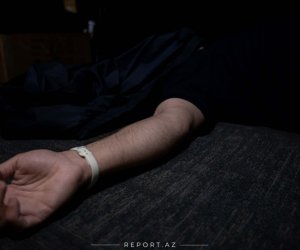How clean are your hands?

Are your hands clean? Sure, you washed them after you went to the loo, but as the experiment here reveals, you probably didn't clean them anywhere near as well as you thought.
And proper hand washing is important - our hands can harbour a nasty colony of illness-inducing bugs including E.coli, salmonella, clostridium difficile, campylobacter, the superbug MRSA (which is resistant to certain antibiotics), as well as cold and flu viruses and norovirus, the winter vomiting bug.
But what constitutes proper hand washing, and are you doing enough to protect yourself?
To find out I used a special UV camera to test different hand-washing techniques - from the typical 'rinse and shake' to the 30 seconds recommended by a leading authority on disease control.
First, I rub on a gel known as Glo Germ, which simulates how bacteria cling to your skin. The gel, which is clear but 'glows' under UV light, is used as a visual aid in hygiene training - it's been used for training nurses who are going to be working with ebola patients, for example.
The gel contains particles the same size as bacteria, so any that's left behind (ie, that shows up white in the UV light) gives you an immediate idea of how good your hand-washing technique is. In other words, the whiter the hands in these pictures, the dirtier they are - and the darker they are, the cleaner.
The results may make you think twice next time you're at the bathroom sink...
We've all done it: there's no soap or towel, or we're in a rush, so we make do with the merest of rinses under a running tap and a quick shake to get our hands dry. Indeed, up to a quarter of us only briefly wet our hands, according to a 2013 study by Michigan State University. Researchers observed 3,500 people after they'd used a public loo and found men were much more likely to just rinse than women.
However, as the picture shows, rinse and shake doesn't achieve much. After running my hands under the tap for three seconds, my hands show up a glowing white under the camera - suggesting lots of bacteria will have been left there.
Only a little of the bacteria has been removed from the sides of my fingers. You can see the white rings around my cuticles, where colonies of bacteria may have settled. 'A quick rinse is never enough,' says Dr Lisa Ackerley, a leading hygiene expert and visiting professor at the University of Salford. 'Everyone needs to wash their hands properly, especially after going to the bathroom.'
Faecal bacteria on hands is really common, explains Dr Val Curtis, an expert in hygiene and public health at the London School of Hygiene & Tropical Medicine. 'We did a study of commuters around England and found that 28 per cent had it on their hands.'
Research suggests just 37 per cent of men and 61 per cent of women wash their hands after using the bathroom.
And people are less likely to wash their hands in a dirty bathroom, says Dr Curtis. 'This makes sense because you get the feeling you might be more likely to get contaminated with something - but that may be exactly when you really need to wash.'
SIX-SECOND WASH - WITHOUT SOAP
Six seconds is the average length of time people spend washing their hands, according to research. But this is not long enough to effectively remove bacteria.
The NHS recommends we wash for at least 15 seconds - roughly the time it takes to sing Happy Birthday twice over at a fairly jaunty pace.
Washing my hands for slightly longer has reduced the white areas - the amount of 'bacteria' - on my hands compared with rinse and shake (especially on my palms, not shown), but there is still a high concentration on the backs, around my wedding ring, under my fingernails and in my cuticles.
The NHS advice stresses the need to rub your hands palm to palm and then to interlace the fingers as you scrub, followed by rubbing around your thumbs in order to ensure all areas are clean. But, like me, most people tend to put most effort into their palms, says Dr Ackerley, missing areas such as between the fingers and around the nails, cuticles and thumbs.
Overall, however, my hands have fewer bacteria - no doubt because this time I dried my hands with a towel.
'Drying your hands is really important,' says Dr Ackerley. 'If you've missed anything while washing, the rubbing action will help remove any bacteria.'
And germs transfer more easily to and from wet hands - so you want to avoid leaving the loo with damp hands.
'Norovirus can survive well on hard surfaces, such as door handles, so you run the risk of picking up people's germs. Never dry hands on the kitchen tea towel. Any bacteria you take off your hands could then be transferred to when you wash up. I prefer to use kitchen roll.'
SIX-SECOND WASH - WITH SOAP
The most important part of hand washing is using soap, according to Dr Curtis. 'As long as you use soap, it's quite hard to wash your hands badly. It's sticky, so you have to wash it off - taking the bacteria with it,' she says.
'Soap doesn't kill bacteria, it gets rid of them,' she says. 'This is because one end of the soap molecule attaches to water while the other end attaches to dirt (which is where the bacteria will be).
'So, as you rinse your soap-covered hands, the water strips off the soap, taking the dirt with it.'
(dailymail.co.uk)
www.ann.az




































 Photo
Photo 



 Video
Video 

